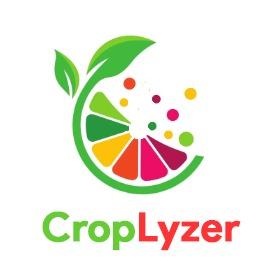CropLyzer
An IoT technology using Raspberry Pi driven by AI/ML technology that predicts maturity of fruits in an agricultural farm.
Created on 16th April 2023
•
CropLyzer
An IoT technology using Raspberry Pi driven by AI/ML technology that predicts maturity of fruits in an agricultural farm.
The problem CropLyzer solves
The Indian agro-based economy accounts for a large portion of its GDP and also proves employment to be as high as 40 percent of India’s total employment. The stage at which plants are harvested has a significant impact on quality. High quality is achieved by harvesting at the correct maturity stage. Fruit harvested before optimal maturity may not fully mature and develop good flavor, while late harvested (overripe) plants may have a shorter post-harvest lifespan and may not develop good flavor. The ripeness of the fruit at harvest greatly influences its quality along the post-harvest value chain. Therefore, accurate, efficient and effective maturity metrics must be applied to ensure high quality at all levels of the value chain. Improved and wider application of precision farming technology in India will help reduce production costs, increase productivity and make better use of natural resources. Ability to revolutionize modern farm management in India by improving profitability, productivity, sustainability, crop quality, environmental protection, farm life quality, food security and rural economic development. Our vision is to aid in minimizing losses due to untimely harvesting of crops due to a vast multitude of factors used in anticipating it and early harvests for some crops to provide more monetary value to the farmer using an integrated approach to analyze and estimate using machine learning models and Raspberry Pi.
Sustainable development Goals :
No poverty:1 The farmers are getting the true quality status of their agricultural products which improves the likelihood and satisfies the no poverty goal
Zero hunger:2 As the project increase agricultural productivity and safe food consumption
Responsible Consumption and Production - It is the duty of every citizen to responsibly consume and produce items. The maturity of crops will provide farmers with novel markets and satiate the huge groups of consumers
Challenges we ran into
We initially tried to make the mechanical parts of the robot using stationery items like cardboard and mountboard. However, the material was not applicable for sustaining the weight of the camera at the end and lacked rigidity to hold itself stable in the air when attached to the servo motors. As students, we do not have access to high-end materials or have the finance to invest in processes like 3D printing. Hence, we took a different approach. We went to multiple local artisans, carpenters and scrap dealers to retrieve different materials that could help us create our robot. After testing a bunch of materials against rigidity, stability, temperature resistance and long-term usage, we decided to use hardwood. Hardwood gave us the correct amount of stability and stiffness that could hold the robot together with all the technical parts in place. It was a great learning experience outside of plain coding.
Tracks Applied (1)
Replit
Replit
